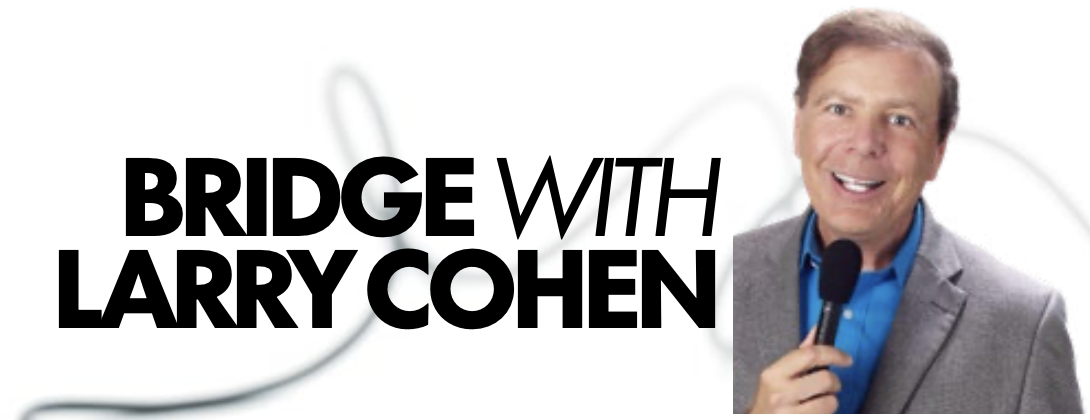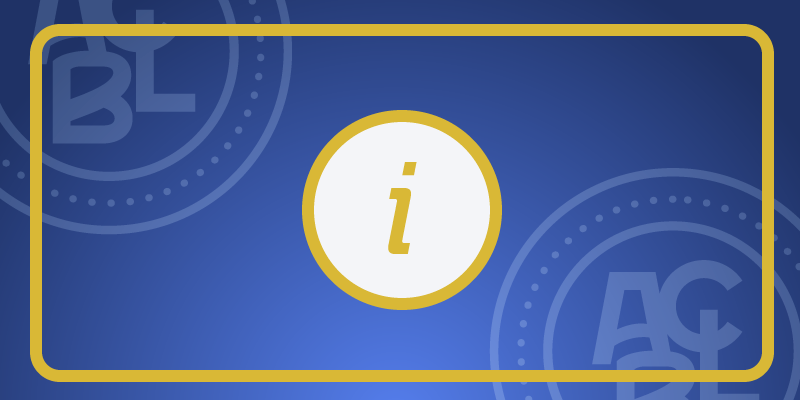



In the previous article, we examined Takeout, Negative, Responsive, Support, and DSI Doubles. This time, we wrap up with a few more doubles which are part of modern bidding.
Lead-Directing Doubles
Whenever the opponents make an artificial bid, your double should show that suit ‒ typically as a request for partner to lead the suit. Here are some auctions where the double would request the lead of the artificial suit being doubled:
*Double = But don't ask any question about the meaning of 5♦.
The higher the level of the lead-directing double, the less stringent the requirements for suit length/quality. Don’t double a 2♣ Stayman response with only ♣AK2 (the opponents might redouble and play there). Length and strength are needed on a low level (such as ♣KQ1095). On the other hand, if Spades have been agreed by the opponents, you might double their 5♣ Blackwood response with as little as ♣K6 – suggesting Clubs as the best lead. The opponents are not likely to be able to play an 11-trick redoubled contract in a side suit.
Aside from doubles of Stayman, Transfers, Blackwood, fourth suit forcing, and control-bids, there are many other artificial bids which fit this category. Doubling an artificial 2♣ opening shows Clubs, but you are likely to be on lead. Doubling an artificial response to 2♣ is a much more useful place to insert a lead- directing double. A more extensive (but by no means exhaustive) list of situations in which a lead-directing double of an artificial bid is appropriate includes these relatively common cases: Bergen Raises (such as 3♣ or 3♦ responses to a major), Drury (2♣ or maybe 2♦ by a passed hand after a major), Gerber (4♣ after No-Trump), New Minor Forcing (2♣ or 2♦ after a No-Trump rebid) and Splinter bids (jumps showing a singleton or void).
The last (Splinters) is a bit tricky. If the opponents are playing in a suit contract, suggesting a lead of dummy’s singleton is usually not a good way to start the defense. So, after:
Many pairs agree that a double is not for a Diamond lead, but instead sends a message relating to the other two suits. One way to play is that doubles of Splinters ask for the lead in the highest unbid suit (in this case, suggesting a Heart lead). Failure to double might get partner to lead Clubs if he is 50-50 between a Club and a Heart.
On the other hand, if the opponents seem likely to play in No-Trump, for example:
It’s best to play the double as showing Heart strength (such as ♥KQJ97). You would want a Heart lead against an eventual No-Trump contract. If that’s not confusing enough, other pairs agree to use doubles of Splinter bids (especially 1♥-Pass-3♠) to suggest a sacrifice! Their double could be based on, say: ♠Q1087542 ♥2 ♦AQ2 ♣43. I leave it to experienced partnerships to sort out their exact agreements on doubles of all Splinter bids.
Quiz
Do these doubles suggest a lead in the suit doubled?
Hand 1
Yes. 4♥ is artificial.
Hand 2
Yes. 2♦ is artificial.
Hand 3
No. This would be a takeout double since 3♣ is natural.
Hand 4
Yes. 3♠ is not showing a Spade suit.
Hand 5
Yes. 6♥ is King-showing, not Heart-showing.
Anti-Lead Directing Doubles
One lead-directing double which is growing in popularity with the expert community is actually an “anti-lead directing double.” The thinking is that once you’ve shown a suit, partner is likely to lead it. If the opponents then cue-bid your suit, there is no need to make a redundant double (to again suggest the lead). Accordingly, doubling a suit you’ve already shown suggests that partner try something else. For example, you're in north and you hold:
♠KQ10 ♥AJ8762 ♦765 ♣3
The bidding goes:
If the opponents land in 3 No-Trump (or maybe a Club contract), you no longer want a Heart lead. Surely, LHO has Hearts under control. A Spade lead now looks like a better idea. If you pass, you are saying you are content for partner to make the expected lead (your Heart suit). An unusual (redundant) double here would say, “I’ve changed my mind, I’m willing for you to lead something else.” A double would have a good chance to inspire an alert partner to lead a Spade. Of course, such an anti- lead double requires careful partnership discussion and agreement.
LIGHTNER DOUBLES
This is really a subset of “Lead-Directing Doubles.” This double is made when the opponents have reached a slam, and the partner of the doubler is on lead. The double requests an “unusual lead.” This could be because the doubler has a void, but it also could be that he wants the lead of dummy’s first-shown suit. It’s up to the opening leader to figure out which. Example of a Lightner double:
East has an Ace and can expect to set the slam if his partner finds a Heart lead. The Lightner double alerts West to do something unusual. There isn’t a first-shown suit by dummy in this auction, so West suspects a void and leads his long Heart suit as the best shot. East ruffs and cashes the ♣A for down one.
This article was written by Larry Cohen and was originally published in Bridgerama+.



